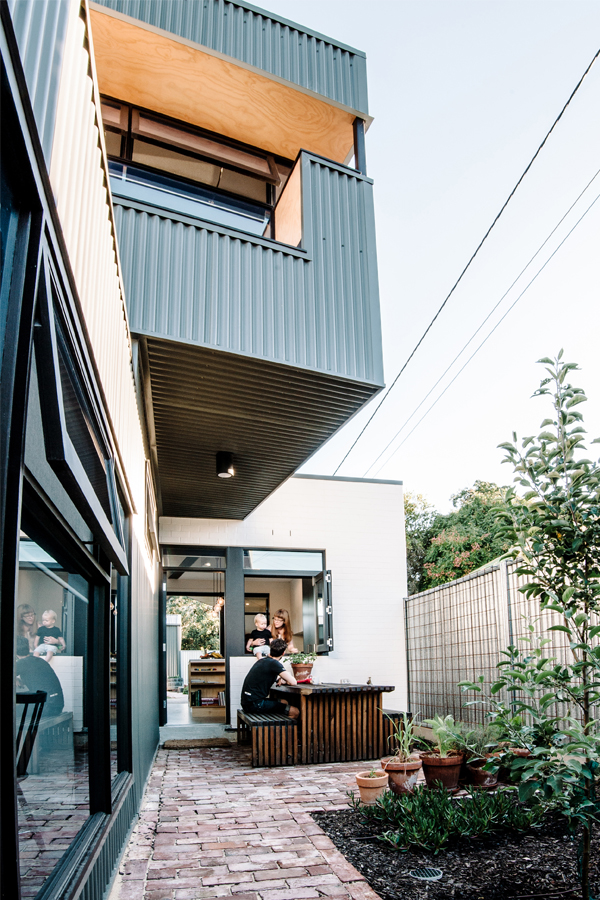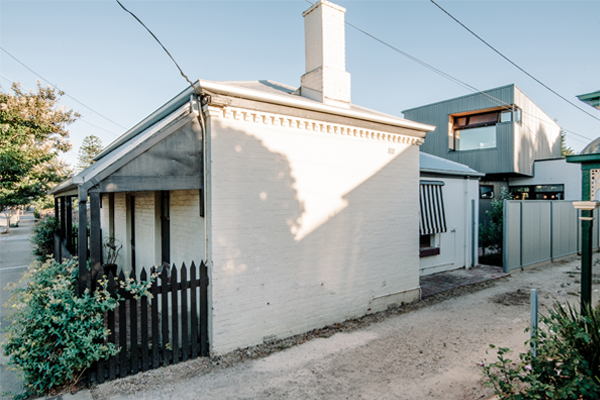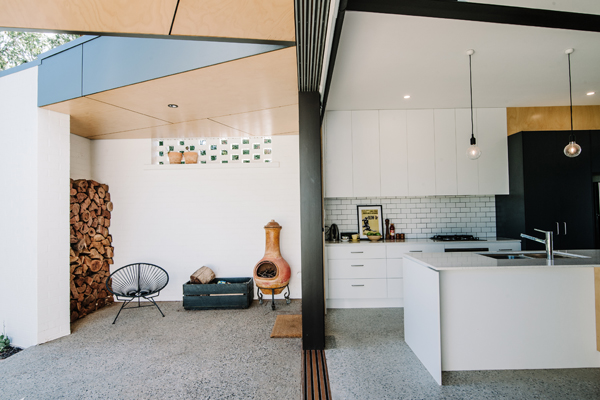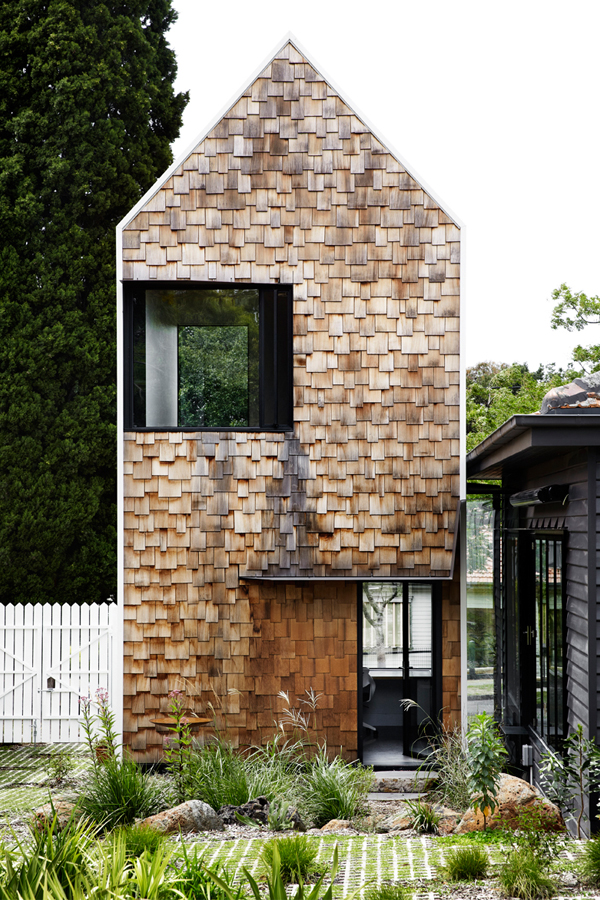
Reshaping the block
Reshaping the block
Share
Written by: Peter Salhani, Above image by: Tess Kelly.
Australians tend to think of houses horizontally,” says Melbourne architect, Andrew Maynard. “In a country with a lot of space, we’ve become accustomed to stretching out all over it.” In fact, Australia currently boasts the largest average new house size in the world – 243 square metres, 10 percent larger than the US. While bloated McMansions blight our new suburbs and even some of our modest postwar houses suffer monstrous extensions, Australian architects are leading the charge for change. Many using their own homes as testing labs for alternative models of home. Among the latest crop of award-winning renovations are small and stealthy houses rich in ideas and ingenuity.
One of them is Maynard’s latest project, Tower House, the recent winner of Australia’s top prize for house alterations and additions at the AIA 2015 National Architecture Awards. This renovation of a 1940s bungalow in suburban Melbourne for a young creative family is actually a series of small turrets. The site is a large block connecting two streets and the architects approached the extensions from a home as village perspective, stringing the barn-like pods of white steel and shingle through the yard and creating a public cut through for neighbours, complete with communal veggie patch. “It’s anti-monolithic,” says Maynard, who wanted to explore vertical housing as a counter-narrative to suburban sprawl.
“From the outside it defies logic because it looks like a group of tiny structures, but from inside it’s actually a series of generous, interconnected rooms.” These include a sheltering studio for mum, a master bedroom and bathroom, a kitchen and dining room, and a separate study for the twin brothers lucky enough to live here. A vertical space both visually and kinetically, it has desks at ground level, a bookshelf scaling one entire wall and a rope-net strung across the upper section as a reading ‘lounge’. “Their parents wanted a challenging space for the boys, to activate their imaginations,” reflects Maynard. There’s another play space under the kitchen gable, astro-turfed and accessed via a ladder of pigeonholes cut into the timber joinery.
For Maynard and his co-director, Mark Austin, playfulness is a signature of their work, though in Tower House, he attributes some of this to the “innocent” imaginations of children. At an early briefing, the twins were given sketchpads and asked, “to entertain themselves”, while the adults talked about design, life, politics and the future. Within minutes, the boys handed back their drawings (fully annotated) of their ideal house. “Those sketches actually distilled a lot of our initial thinking about the project to its raw essence. Kids can do that,” says Maynard, who quotes the Buddhist monk Shunryū Suzuki, in saying: “In the beginner’s mind there are endless possibilities, in the expert’s mind there are few.”
In Adelaide, architect Jon Lowe similarly found new forms on a smaller footprint when remaking his family’s Heritagelisted worker’s cottage. Instead of tacking an open plan box to the back, Lowe used “the whole of site” as his canvas, crafting a modest, multifaceted extension into the long narrow block, playing with alignments and geometry, as well as weaving garden spaces throughout.
The big trick was off setting the main double-height volume of the addition from the original cottage, allowing it to breathe. Its link to the renewed old building is a single-storey utilities block, housing two new bathrooms and a laundry, with room leftover on either side for a courtyard. One is a service area with rainwater tanks, clothesline and hot water service (“all the stuff you don’t want to see but need access to”), and the other is an outdoor dining room off the kitchen, where a little garden is gradually taking shape.
Behind them rises the new volume with kitchen/living downstairs and study/library/playroom upstairs. Lowe has twisted the top floor 10 degrees to catch northern sun and channel it below through a central void that also helps exhaust hot air from the room and draw cooling breezes in from the south. To preserve precious floor area, the library is accessed by a space saving ‘step ladder’ (allowable for ‘libraries’ but not ‘bedrooms’). While every centimetre has been carefully considered, there are surprises too.
“The full moon shining through those library windows is mesmerising,” says Lowe. His material palette of recycled bricks, steel cladding and washed aggregate concrete flooring, respects the original cottage and, at the same time, singles out the extension as a robust living wing with its own identity. In just 80 square metres of new space, he has crafted a clever, sustainable and joyful expression of modern small space living. Aptly named A Collection of Spaces, the project received the John Schenk Award for Alterations and Additions at the AIA 2015 South Australian Architecture Awards.
In Hobart, Australia’s least populated capital city, the tiny home of architectmaker Chris Clinton (Core Collective Architects) was originally a bootmaker’s workshop, then a fish and chippery, before he bought it for his family and began tinkering. “There was definitely a lot of experimentation and ‘design on the go’,” says Clinton, a former submarine hydraulics prototyper, who worked on the Institute of Marine and Antarctic Studies (IMAS) project with John Wardle Architects and Terroir.
In looking for ways to make the space feel bigger, he devised a front door that opens ‘up’ instead of ‘in’, moveable wall panels to help reorganise the small space, a spare sleeping platform concealed behind a sliding door and a dining table that slides out from the kitchen bench. He exploited the small steep site to excavate a basement study space for his son, while at street level, the building’s original shopfront is ‘traced’ in the new faceted facade, where Clinton has thoughtfully added a seating nook for passers-by, sheltering under an eave.
Many of the quirky elements of this house were made by Clinton himself, using materials salvaged or repurposed from the site or other projects. As a model for small-scale, energy-efficient recycled urban housing that gives more than it takes, it won the Peter Willmott Award for Small Project Architecture at the AIA 2015 Tasmanian Architecture Awards. “It’s great to win an award… I’d like to see more houses built like this in Hobart,” says Clinton. “As a profession, we have a responsibility to encourage low-energy living. A house this size means rethinking the way you live.”
MEZZANINE South is on newsstands now, and available through Zinio.
You Might also Like




























